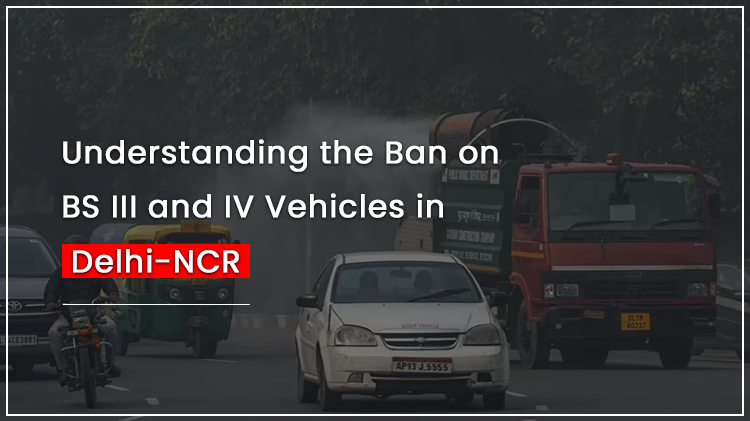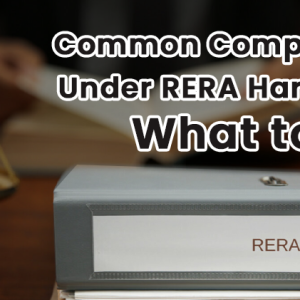For an extended period, the Delhi-National Capital Region (NCR) has served as a central hub in India’s effort to combat air pollution. The dense haze in the area serves as a constant reminder of the pollution problem, especially in the winter. One notable effort to reduce pollution is the prohibition on cars classified as Bharat Stage (BS) III and IV. This blog explores the rationale behind the ban, its effects, and the consequences for Delhi-NCR’s mobility going forward.
1. What are BS Emission Norms?
The Indian government has established Bharat Stage (BS) emission limits to control the amount of air pollutants that internal combustion engines, including automobiles, can produce. Since 2000, the standards—which have their roots in European regulations—have been gradually put into effect.
• BS III (2005–2010): Stricter limits on emissions of pollutants such as carbon monoxide (CO), nitrogen oxides (NOx), hydrocarbons (HC), and particulate matter (PM) were imposed by BS III, which was phased in across the nation.
• BS IV (2010-2020): This stage required vehicles to use more sophisticated technologies including selective catalytic reduction (SCR) systems and diesel particulate filters (DPFs) in order to comply with increasingly tighter emissions regulations.
• BS VI (2020 onwards): India adopted BS VI immediately, eschewing BS V in favor of Euro 6 standards that drastically lower the allowable amounts of PM and NOx.
2. Why the Ban on BS III and IV Vehicles?
The primary motivation behind the Delhi-NCR ban on BS III and IV vehicles is the need to mitigate air pollution, which has escalated to dangerous levels in the area.
• Pollution Crisis: Delhi-NCR has continuously been rated as one of the most polluted areas in the world. Important sources include automobile emissions, industrial pollutants, dust, and burning of crop residue in nearby states. Vehicle emissions are a major factor in making the issue worse, especially those from older cars.
• Health Impact: Extended exposure to high air pollution levels is associated with cardiovascular disease, respiratory ailments, and early mortality. Older cars generate particulate matter that can enter the lungs deeply and seriously harm people’s health.
• Intervention of the Supreme Court: The Indian Supreme Court has adopted a firm position on environmental matters, such as vehicle emissions. The court outlawed the nationwide sale and registration of BS III automobiles in India in 2017. In response, a number of orders have been issued to limit the circulation of older cars in the Delhi-NCR.
3. Implementation of the Ban
The Delhi government and other regulatory organizations have provided precise recommendations, and the ban on BS III and IV vehicles in the Delhi-NCR has been imposed phase-by-phase.
• Movement Restrictions: The Delhi government has temporarily banned the movement of BS III and IV vehicles during instances of extreme air pollution. This is especially typical in the winter, when weather and crop residue burning cause pollution levels to reach their highest points.
• Permanent Ban on Diesel Vehicles: In Delhi-NCR, diesel vehicles that are more than ten years old are prohibited from being driven. This includes cars classified as BS III and IV, which are thought to have a major impact on air pollution.
• Enforcement Measures: To monitor and penalize violators, the Delhi government has deployed enforcement teams and set up checkpoints in coordination with the police and transit authorities. If a vehicle is found to be in violation of the prohibition, it may be fined or even impounded.
4. Impact on Vehicle Owners
Delhi-NCR car owners have been significantly impacted by the prohibition, especially those who depend on older cars for work or everyday transportation.
• Financial Burden: Owners of automobiles must decide how much it will cost to replace their outdated models with more modern, compatible models or to discard them. Owners of BS III and IV automobiles have suffered large financial losses as a result of the vehicles’ sharp decline in value.
• Substitute Resolutions: The Delhi government has implemented scrappage programs that provide incentives for getting rid of outdated cars in an effort to lessen the effects. As part of the effort to promote greener mobility, electric vehicle (EV) buyers can also take advantage of tax breaks and incentives.
5. Effect on the Automobile Industry
The automobile industry has also been affected by the restriction on BS III and IV automobiles.
• Demand Shift: Consumer preference has clearly shifted in favor of EVs and cars that comply with BS VI. In order to fulfill the new requirements, automakers had to modify their production lines and make significant investments in infrastructure and technology.
• Market Dynamics: The value of BS III and IV vehicles has sharply declined as a result of the ban, disrupting the used automobile market. Both consumers and dealers are being cautious, which is causing sales of older models to slow down and inventory levels to rise.
• Innovation Opportunities: The prohibition has, on the plus side, encouraged innovation in the auto industry. Producers are putting more effort into creating engines that are cleaner and more efficient as well as diversifying their line of electric vehicles.
6. Future of Mobility in Delhi-NCR
In Delhi-NCR, the prohibition on BS III and IV vehicles is a component of a larger plan to switch to greener and more sustainable modes of transportation.
• Electric Vehicles (EVs): By 2024, the Delhi government hopes to have 25% of all new car registrations be electric. This is an ambitious goal for EV adoption. The development of charging infrastructure, tax breaks, and subsidies are important elements of this plan.
• Public Transportation: Reducing the amount of private automobiles on the road requires improving public transportation. The Delhi government is making investments in last-mile connectivity, electric bus introduction, and metro network expansion.
• Policy assistance: It is imperative that states and the federal government continue to provide policy assistance. This entails enforcing pollution regulations strictly, encouraging the development of green technologies, and offering financial incentives for the adoption of clean energy.
7. Challenges Ahead
Although the prohibition on BS III and IV automobiles is a positive move, there are still a number of issues.
• Public Awareness: It’s critical to educate the public about the significance of lowering vehicle emissions and motivating car owners to modify their driving habits. Many people are still ignorant about the advantages of switching to cleaner cars as well as the health hazards connected to air pollution.
• Infrastructure Development: The availability of sufficient infrastructure, such as EV charging stations, a reliable public transportation system, and effective traffic management systems, is essential to the success of the shift to greener modes of transportation.
• Balancing Economic Impact: Decision-makers must strike a balance between the necessity of protecting the environment and the financial effects on car owners and the auto industry. To facilitate the shift, this calls for thorough preparation, gradual implementation, and support systems.
One important step in the fight against air pollution in Delhi-NCR is the prohibition of automobiles classified as BS III and IV. In addition to posing difficulties for car owners and the auto industry, it is a chance to reconsider and reorganize transportation in one of the most polluted areas of the globe. Delhi-NCR can lead the way towards a healthier and more sustainable future by embracing cleaner technologies, improving public transportation, and cultivating a sustainable culture.




